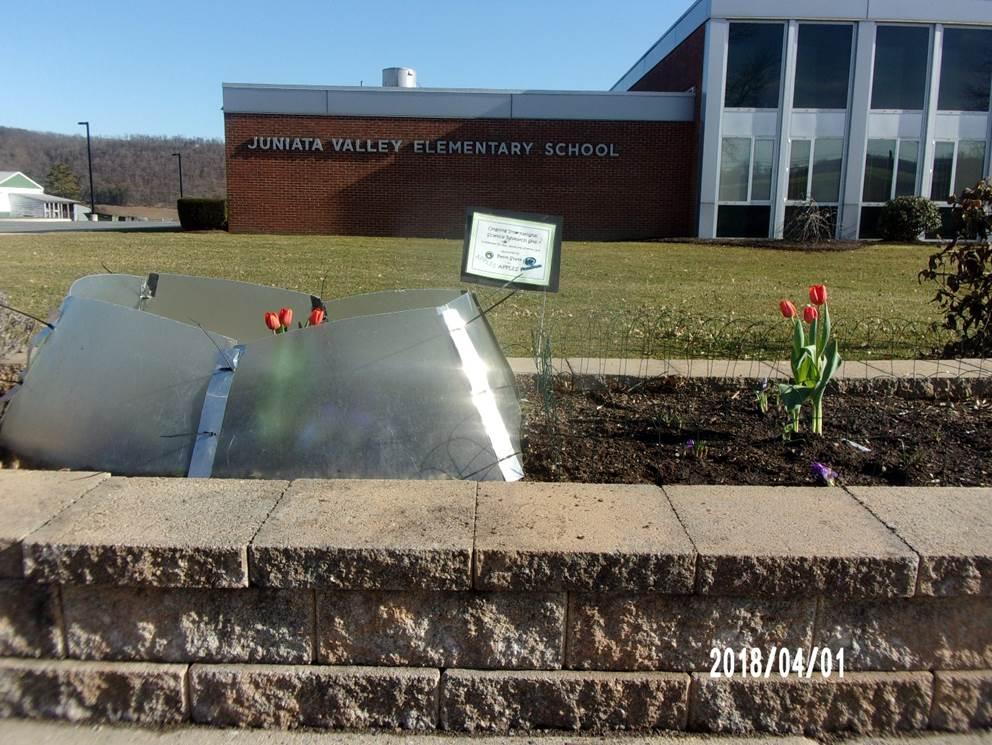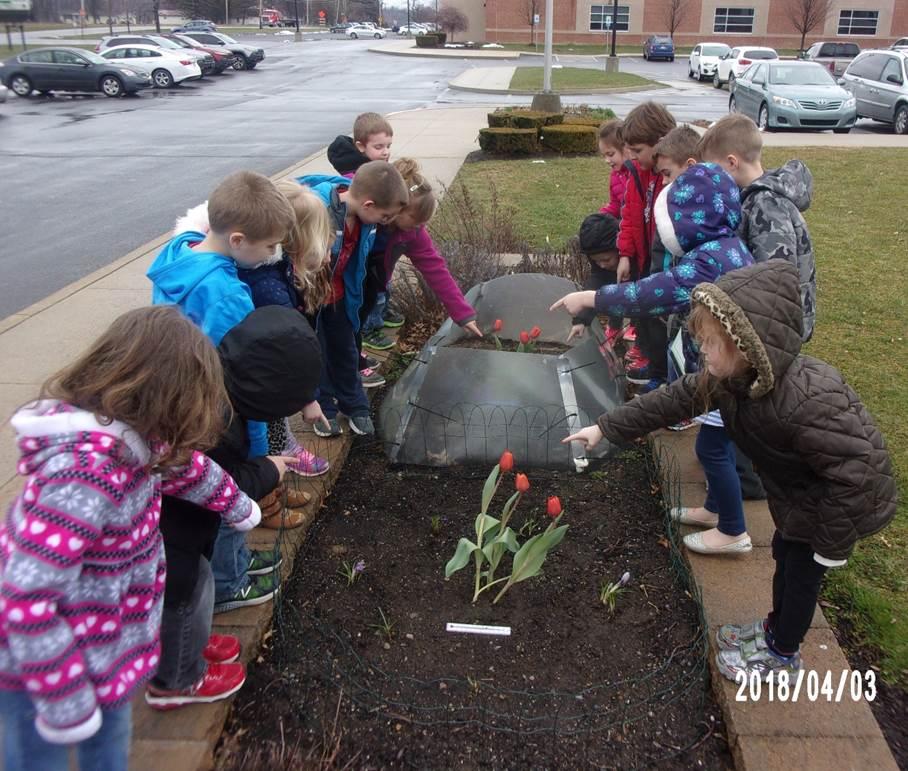Kristin Joivell
Forum Replies Created
-
AuthorPosts
-
 Kristin JoivellParticipant
Kristin JoivellParticipantAfter undergoing a simple training lesson about identification of phenophases in crocus and tulip plants, students recorded their data in Plant Phenology Journals. Phenophases were represented by simple letter abbreviations with B meaning budding, O meaning blooming, W meaning wilting, and X meaning that the petals had dropped off of the plant completely.
Over the two school years it was interesting to note how easily the students were able to infer why they thought there were differences between the phenophases of the plants in the warmed open top chamber plot and the unwarmed fenced plot. Having photographs of each plot available during these discussions helped students with forming stronger, more evidence based ideas as they compared and contrasted the phenophases noted in the different plots.
 Kristin JoivellParticipant
Kristin JoivellParticipantAt APPLES 2016, Nell recommended Douglas Llewellyn’s book to me to help with creating science lessons in which students can gain ownership of the entire science process, Differentiated Science Inquiry. Over the past 2 school years, I was able to re-create my existing lessons following the format in this book with much success to that regard! Check it out at: https://www.amazon.com/Differentiated-Science-Inquiry-Douglas-Llewellyn/dp/1412975034
-
This reply was modified 6 years, 9 months ago by
 Kristin Joivell.
Kristin Joivell.
 Kristin JoivellParticipant
Kristin JoivellParticipantWow! Greenland! I never thought that I would have the opportunity to travel to this fantastic and wonderful place! Looking back on last summer’s trip, it almost seems surreal to me that I was there at all–but the pictures prove that it wasn’t a dream. I think one of the most valuable things to me this school year was to be able to validate to people in my community that climate change research is occurring in the Arctic right now. Being able to show students, parents, and faculty the photographs of the OTCs being used in Greenland just like the one being used in the gardens at our school really gave credibility to the JV Phenology Project that I conducted over the past 2 school years.
Being able to see the glacier as it was calving off into the river was truly what hit home for me as it applies to the negative effects of climate change. As it was breaking off, it made me wonder how much of the glacial melt was “normal” compared to other years and how little changes can make big impacts.
 Kristin JoivellParticipant
Kristin JoivellParticipantOver the two school years for the project, I replicated a Plant Phenology Study in April 2017 and 2018. In this month long study during each school year, the kindergarten students compared and contrasted the growth of tulip and crocus bulbs in warmed and unwarmed plots. Students learned and observed phenological stages, monitored and documented temperatures, recorded data in plant phenology journals, and made inferences about the comparative growth of the plants in the two plots.
Here is the plot in April 2017:
Here are students identifying phenophases in April 2017:
Here is the plot in April 2018:

Here are students identifying phenophases in April 2018:

 Kristin JoivellParticipant
Kristin JoivellParticipantFamily Science Night was in May 2018! I showcased the work conducted over the 2 school years from our JV Phenology Project for over 150 attendees. The local newspaper wrote a wrap up article to conclude as well.
 Kristin JoivellParticipant
Kristin JoivellParticipantHi Shaun! I love the round wire fences that you are using. I assume they are for the ambient plots. What exactly is that material called and where can I get it? I’ve been wondering what I could do to enclose my ambient plot without affecting the results of the experiment and the round wire fencing seems to be a good solution. Also, what are the hula hoops for? Do they mark something special or are they just a boundary for your planted seeds? I was also thinking of using a hula hoop for both plots to give the students a frame of reference as to where the seeds actually are planted.
 Kristin JoivellParticipant
Kristin JoivellParticipantI really like the questions that the students came up with! I’ve tried some lessons in my kindergarten class with students developing their own questions for inquiry after some guided lessons in science. They’ve been pretty successful in thinking of testable questions. When we do the lab day to conduct experiments to investigate the questions, I play the role of the lab assistant and make sure all the equipment needed is ready to go!
 Kristin JoivellParticipant
Kristin JoivellParticipantI like your sign–that probably helps get the word out about the importance of your study and helps to prevent interference. I made one, too, I plan on placing one at both the ambient plot and the warming chamber plot. Here’s what mine looks like:
 Kristin JoivellParticipant
Kristin JoivellParticipantI also had concerns about vandalism with both the time lapse camera and the warming chamber. I actually placed the time lapse camera about 12 feet up in the tree we are taking photographs of to prevent problems. And I also created a sign for the plant phenology study plots–hopefully mine works to prevent issues. It is in front of the school building where security cameras are mounted, so hopefully that will help deter possible interference.
 Kristin JoivellParticipant
Kristin JoivellParticipantI am also planning a Family Science Night in May to have students present data gathered from the time lapse camera and plant phenology projects! Good luck with your STEAM night!
-
This reply was modified 6 years, 9 months ago by
-
AuthorPosts
Recent Comments